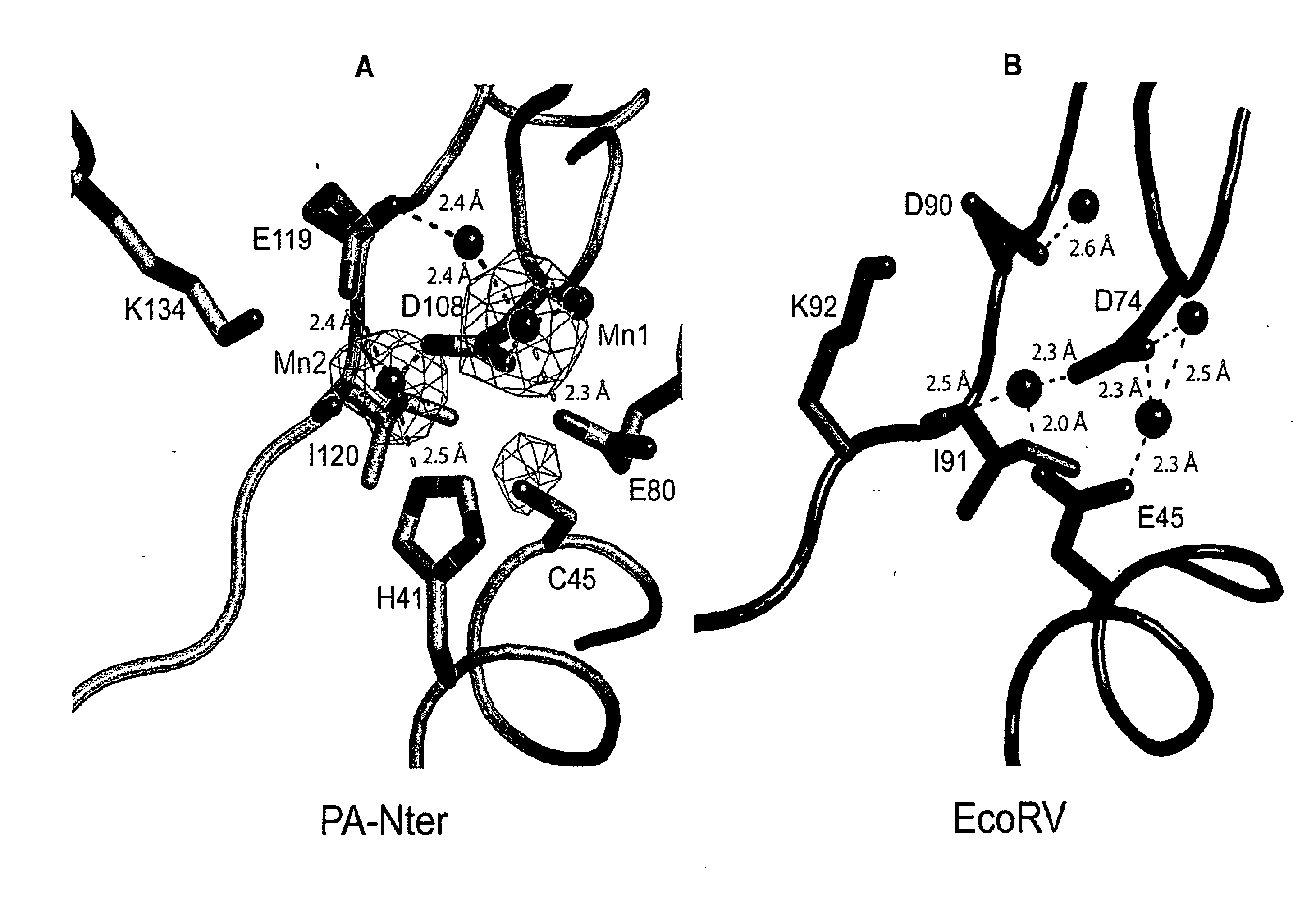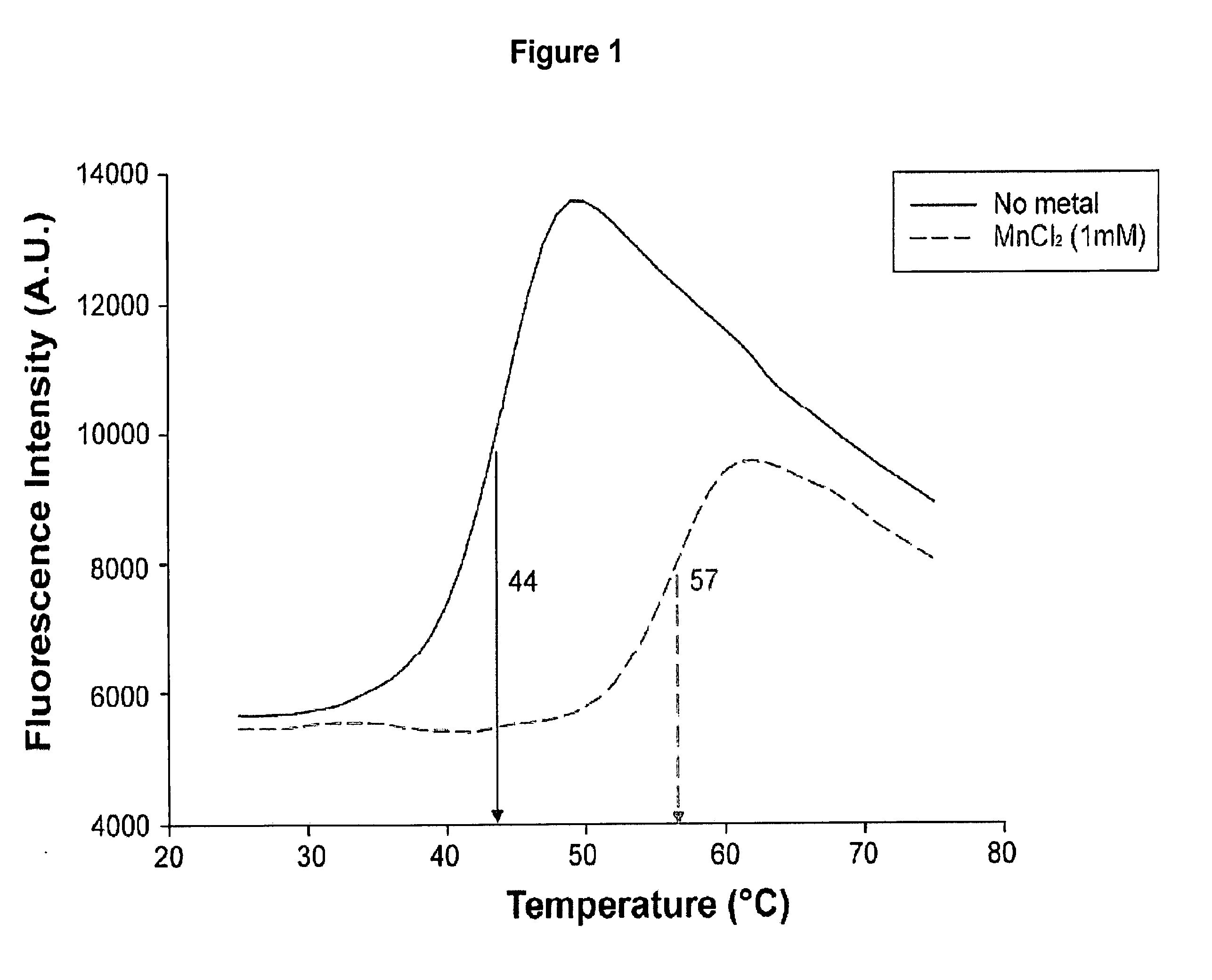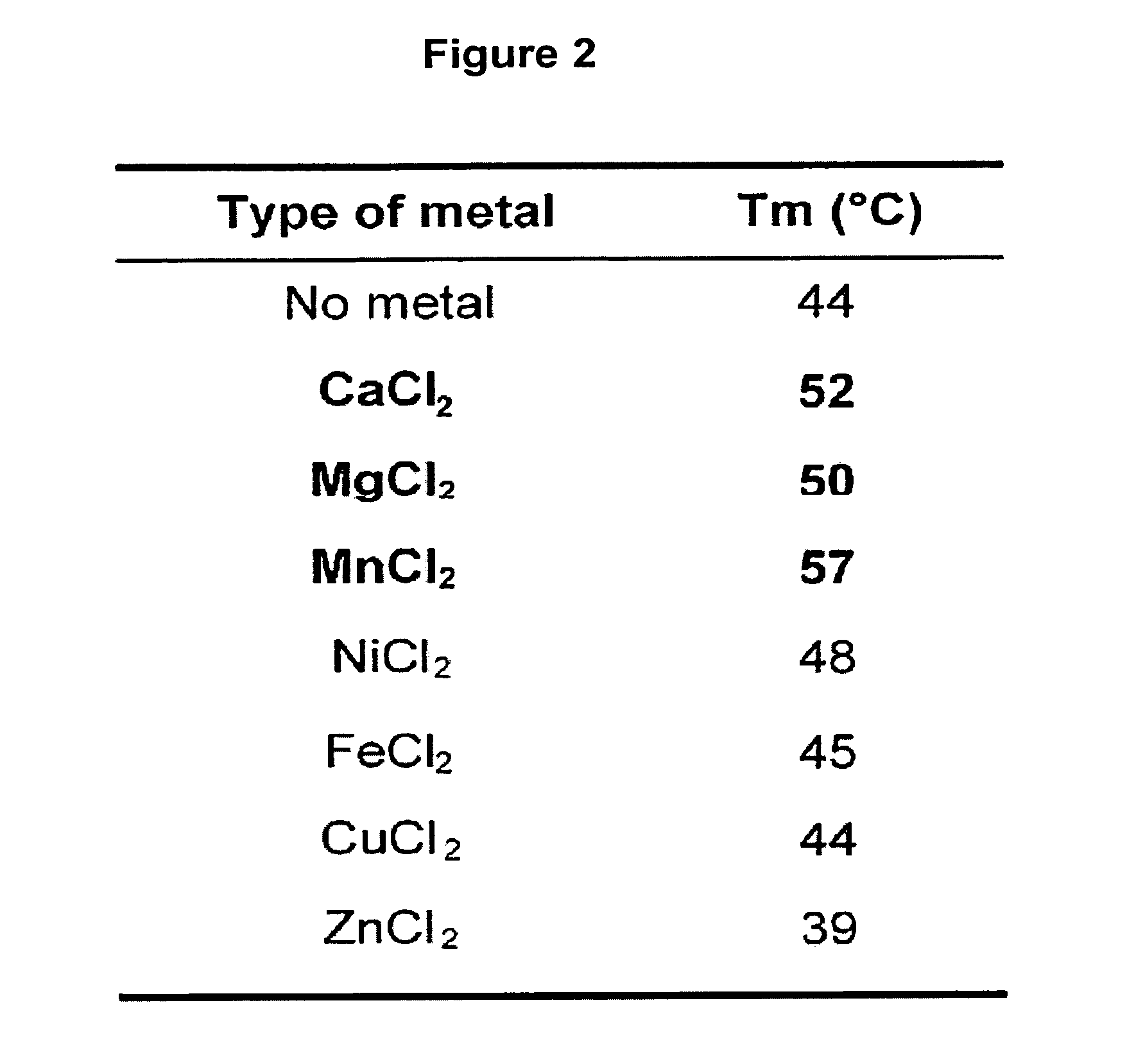Polypeptide Fragments Comprising Endonuclease Activity and Their Use
a polypeptide and endonuclease technology, applied in the field of polypeptides, can solve the problems of reduced clinical disease duration, large destructive power, and insufficient use, and achieve the effects of reducing the duration of clinical disease, not being widely used, and not being able to fully absorb and store the peptides
- Summary
- Abstract
- Description
- Claims
- Application Information
AI Technical Summary
Problems solved by technology
Method used
Image
Examples
example 1
Cloning, Expression and Purification
[0153]The DNA coding for PA residues 1-209 of the amino acid sequence set forth in SEQ ID NO: 2 (A / Victoria / 3 / 1975 (H3N2)) was cloned into a pET-M11 expression vector (EMBL) between the NcoI and XhoI sites. A polypeptide linker having the amino acid sequence GMGSGMA (SEQ ID NO: 19) was engineered after the tobacco etch virus (TEV) cleavage site to obtain a 100% cleavage by TEV protease. This vector was used to transform the BL21(DE3)-RIL-CodonPlus E. coli strain (Stratagene). The protein was expressed in LB medium overnight at 15° C. after induction with 0.1 mM isopropyl-β-thiogalactopyranoside (ITPG). The protein was purified by an immobilised metal affinity column (IMAC). A second IMAC step was performed after cleavage using a His-tagged TEV protease, followed by gel filtration on a Superdex 200 column (GE Healthcare). Finally, the protein was concentrated to 5 to 10 mg / ml.
example 2
Endonuclease Assay
[0154]All ribonucleic acid substrates for endonuclease assays were obtained by in vitro T7 transcription as described previously (Price et al., 1995, J. Mol. Biol. 249:398-408). Two structured RNAs were used: Alu-RNA; 110 nucleotides comprising the Alu-domain of Pyrococcus horikoshii signal recognition particle (SRP) RNA (unpublished construct) and Candida albicans tRNAAsn composed of 76 nucleotides (unpublished construct). We also used a uridine-rich unstructured RNA of 51 nucleotides (U-rich RNA; 5′-GGCCAUCCUGU7CCCU11CU19-3′; SEQ ID NO: 18) (Saito et al., 2008, Nature 454:523-527) and two partially folded RNAs derived from influenza A virus genomic RNA segment 5: a panhandle RNA (ph-RNA) of 81 nucleotides (Baudin et al., 1994, EMBO J. 13:3158-3165) and a shorter panhandle RNA (short ph-RNA) of 36 nucleotides comprising just the conserved 3′- and 5′-ends with a short linker (unpublished construct). The endonuclease activity was also tested using a circular single ...
example 3
Thermal Shift Assay
[0157]Thermal shift assays were performed with 10 μM of PA-Nter (SEQ ID NO: 22) in 20 mM Tris-HCl pH 7.0 or 8.0, 100 mM NaCl and a 5× dilution of SYPRO Orange dye (Invitrogen) as described (Ericsson et al., 2006, Anal. Biochem. 357:289-298). The dye was excited at 490 nm and the emission light was recorded at 575 nm while the temperature was increased by increments of 1° C. per minute from 25 to 75° C. Control assays were carried out in the absence of protein or dye to check that no fluorescence signal was recorded.
[0158]The thermal shift assay was performed to investigate the thermal stability of PA-Nter (SEQ ID NO: 22) in presence and absence of divalent cations. The experiments revealed a significant increase in thermal stability (apparent melting temperature shifts from 44° C. to 57° C.) upon addition of manganese ions and to a lesser extent upon addition of calcium and magnesium ions (FIGS. 1 and 2). Titrating the compound 2,4-dioxo-4-phenylbutanoic acid, a k...
PUM
| Property | Measurement | Unit |
|---|---|---|
| pH | aaaaa | aaaaa |
| pH | aaaaa | aaaaa |
| pH | aaaaa | aaaaa |
Abstract
Description
Claims
Application Information
 Login to View More
Login to View More - R&D
- Intellectual Property
- Life Sciences
- Materials
- Tech Scout
- Unparalleled Data Quality
- Higher Quality Content
- 60% Fewer Hallucinations
Browse by: Latest US Patents, China's latest patents, Technical Efficacy Thesaurus, Application Domain, Technology Topic, Popular Technical Reports.
© 2025 PatSnap. All rights reserved.Legal|Privacy policy|Modern Slavery Act Transparency Statement|Sitemap|About US| Contact US: help@patsnap.com



